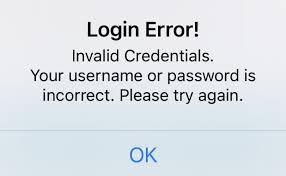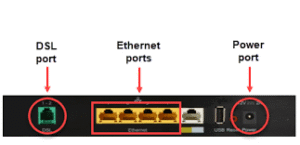Logging into online accounts seems simple, yet many users encounter unexpected errors that block access. Frustration grows when passwords fail, authentication loops appear, or systems display vague messages. Understanding these issues and applying the right solutions ensures smoother access while keeping accounts secure.
Why Login Errors Occur
Login problems arise from several factors. Systems rely on exact matches of usernames, passwords, and additional security layers. Even a small error like an extra space or outdated browser setting can trigger denial. Technical reasons such as expired cookies, corrupted cache, or server-side issues also play roles. Recognizing the root cause reduces wasted time and prevents repeated mistakes.
Incorrect Username or Password
The most frequent error involves wrong credentials. Typing mistakes, forgotten characters, or reversed capitalization disrupt recognition. Systems treat uppercase and lowercase letters as distinct, so “Password” differs from “password.” Storing credentials in memory or browsers sometimes leads to outdated entries, especially if users change details often.
Read Also: CenturyLink Secure Login: How to Keep Your Email Safe
Fixing Credential Errors
Resolving this issue begins with careful re-entry. Double-check each character, paying attention to symbols or numbers. If uncertainty remains, reset the password through the recovery option. Using a secure password manager simplifies future logins by storing details accurately. When usernames cause confusion, confirm registered email addresses or contact support for clarification.
Expired or Reset Passwords
Many platforms enforce password updates after set periods. Users unaware of expiration policies may see login attempts blocked. Sometimes administrators reset credentials for security reasons, leaving old passwords invalid.
Solution for Expired Passwords
Follow the platform’s reset process immediately. Usually, a password reset link arrives via email or SMS. Choose a strong, unique combination that differs from previous ones. Avoid reusing common sequences, and store the new password securely. Regular updates maintain security while preventing forced lockouts.
Two-Factor Authentication Challenges
Two-factor authentication adds strong protection but often introduces hurdles. Missing verification codes, delayed SMS delivery, or malfunctioning authenticator apps create barriers. In some cases, users lose access to the device generating codes.
Overcoming Two-Factor Barriers
If codes do not arrive, check mobile signal or internet connection. Verify that the time settings on mobile devices align with the authenticator app, as mismatched clocks cause failures. If the original device becomes unavailable, use backup codes provided during setup. Many services allow alternative methods such as email verification or security questions. Contacting support remains a final step when no option works.
Browser and Cache Issues
Web browsers store cookies and cache files to speed access. Over time, these files may corrupt, causing login loops or failure to load authentication pages. Some privacy extensions also interfere with session handling.
Clearing Browser Data
Open browser settings and remove cookies or cached files linked to the problematic site. Restarting the browser often resolves session conflicts. Updating to the latest browser version ensures compatibility with security protocols. If issues persist, attempt login through a different browser to isolate the cause.
Server or Network Errors
Sometimes the error lies outside user control. Platforms experience downtime due to maintenance, overload, or security breaches. Network interruptions also prevent secure connections, leading to timeout messages or partial loading screens.
Handling Server-Side Problems
Check official status pages or social media updates from the service provider. If confirmed as downtime, waiting remains the only option. For network-related disruptions, restart the router, switch to a stable connection, or attempt login on another device. Patience becomes essential when problems originate on the server side.
Account Lockouts
Repeated failed attempts trigger account lockouts, designed to stop brute-force attacks. While effective for security, legitimate users may accidentally lock themselves out after multiple mistakes.
Regaining Access After Lockout
Follow on-screen instructions for recovery. Some systems automatically unlock after a waiting period, while others require manual intervention. Resetting the password often clears restrictions. Contacting customer support provides assistance when automated systems fail. Keeping credentials stored securely prevents unnecessary lockouts.
Security Software Conflicts
Firewalls, antivirus tools, or VPNs sometimes block authentication servers. These tools interpret login traffic as suspicious, especially when IP addresses change frequently through VPNs.
Fixing Security Conflicts
Temporarily disable VPNs or switch servers to see if login succeeds. Adjust firewall or antivirus settings to allow the platform’s domain. Ensure that security tools remain updated to reduce false positives. Always re-enable protections after troubleshooting to maintain safety.
Mobile App Login Errors
Applications on smartphones face unique challenges, including outdated versions, corrupted installations, or device-specific bugs. Cached data within the app may conflict with authentication systems.
Resolving App-Specific Issues
Update the app through the official store. If issues continue, uninstall and reinstall the application to refresh data. Clearing app cache in device settings often resolves hidden conflicts. Ensuring the device operating system is up to date also improves compatibility.
Preventing Future Login Problems
Proactive habits reduce the frequency of login troubles. Regularly updating credentials, enabling backup recovery options, and storing details in a secure password manager provide resilience. Keeping browsers, apps, and devices updated prevents technical incompatibilities. Monitoring email or SMS for alerts from platforms ensures awareness of policy changes or security resets.
Conclusion
Login errors disrupt productivity, but most stem from manageable causes. Careful attention to details, routine maintenance of devices, and reliance on security best practices transform frustrating obstacles into minor setbacks. By applying the right solutions, users regain access quickly while keeping accounts protected.
FAQs
Why can’t I log into my account?
Login issues often come from wrong credentials, expired passwords, or browser errors.
How do I fix a wrong password error?
Double-check details, reset your password, or use a password manager for accuracy.
What should I do if 2FA codes don’t work?
Sync device time, try backup codes, or contact support if codes fail.
Why does my browser block logins?
Corrupted cache, outdated cookies, or extensions can prevent successful login.
How do I avoid login problems in the future?
Keep credentials updated, clear cache regularly, and enable recovery options.




